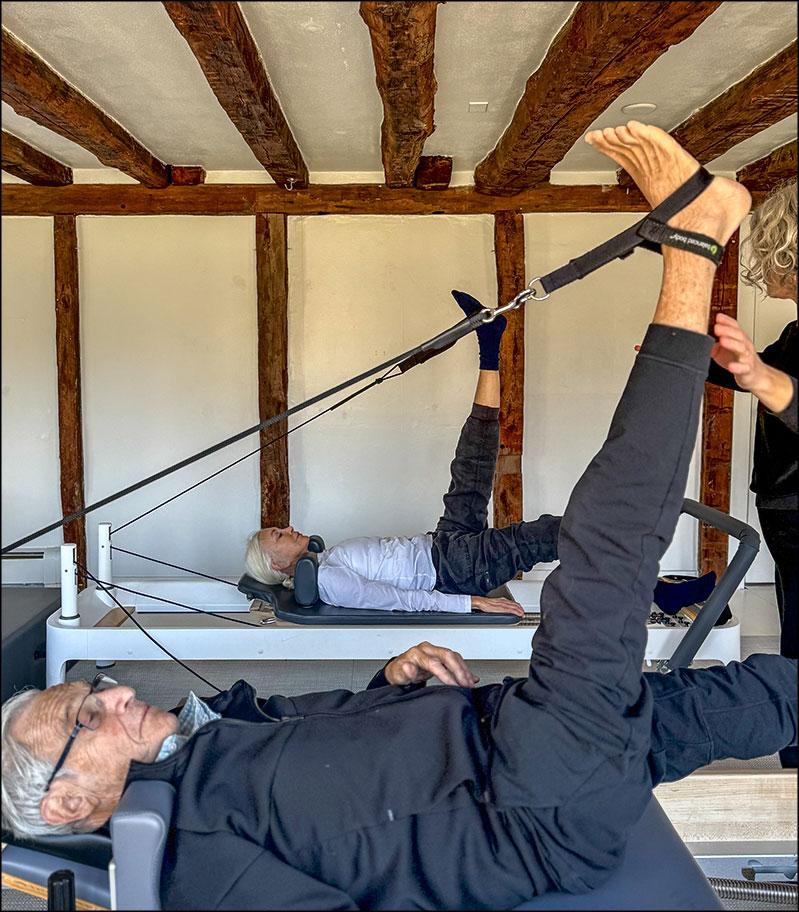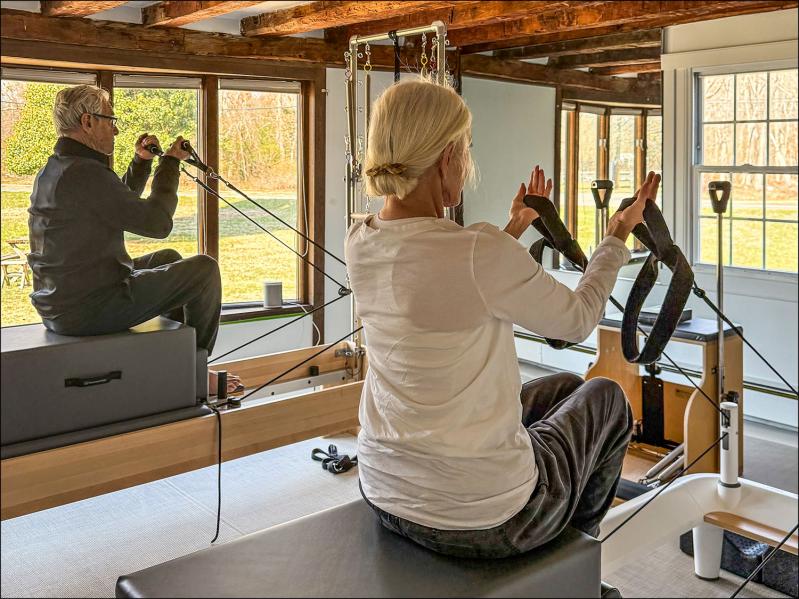Pilates. The word seems to be everywhere: on signs around town advertising the opening of a new fitness studio. Cited by casual acquaintances and Hollywood stars alike as the secret to maintaining their physiques. Perhaps recommended by a doctor or surgeon to help with recovery. Over the past few years, interest in Pilates has exploded — and with its emphases on developing mobility, flexibility, and core strength, it can be especially beneficial for seniors.
“Aging does a number on our bodies, but if we have strength and we have mobility, we can still function,” said Rasa Tarailaite, owner of RasaPilates, who has been training clients in East Hampton for nearly a decade. “I have an 86-year-old who’s done Pilates for 20 years. She moves better than some 40-year-olds.”
What we now call Pilates began as a sequence of exercises created by the German-born fitness guru Joseph Pilates in the early 20th century. He termed the method “Contrology,” and aimed to restore the body to an “ideal” physical state through precise, controlled movements and the use of strategically designed machines (including the “reformer”). Through regular practice, he maintained, an individual could correct postural imbalances and avoid the physical limitations associated with aging.

For older adults, maintaining mobility is often a crucial factor in maintaining independence. “Once we lose range of motion and strength, we become dependent on others. And that downhill is very fast,” Ms. Tarailaite said. Pilates, then, can present a means of directly intervening in that decline. “It becomes a base for whatever you do — it’s learning and working your body from the inside out. Learning your body in space, learning your posture, so you can take it out to the world.”
Sustained progress requires time and dedication, but even a single “evaluation” session can provide valuable insights. Having a client lie down on the reformer, for example, changes the gravitational force, enabling the body to move in ways it may not have been able to in years.
“Gravity is heavy. You take the gravity away, it’s more enjoyable, and you can move your joints,” Ms. Tarailaite said. “People come with all kinds of aches and pains — but you move them and they say, ‘Oh, it feels so much better.’ Of course, the earlier you start, you get more benefits for the future — but it’s never too late. We have this expression in Lithuania: ‘Bend the tree while it’s still young, it bends easier.’ You can still bend when it’s old,” she said, though it will likely require a more tailored approach.
Amanda Duckstein, who opened her own studio, Shadowbox Pilates, in Water Mill last year, emphasizes the importance of an initial private session before jumping into a group class.
“The individual attention from a well-trained instructor who can keep a close eye on your form and answer your questions will help you learn proper alignment and techniques that you can bring with you on your personal Pilates journey,” Ms. Duckstein said. Without that foundation, attempting to keep up with the pace and unfamiliar movements of the group leaves beginners particularly vulnerable to injury, which can deprive them of the very benefits the exercises were designed to effect.
Ms. Duckstein notes that certain conditions, like osteoporosis and arthritis, regularly develop in older adults “even if they have been healthy and strong their whole lives. But in Pilates we can offer them specific postural and weight-bearing exercises to assist in improving bone density.”
“Students with arthritis benefit from the work we do with springs, which help to strengthen the little muscles that support the joints,” she continued. “Lastly, much of the work we do in Pilates is centered around building a strong core, which is essential to supporting good posture and balance.”
Beyond the strictly physical, Ms. Duckstein would love for people to “understand that a consistent practice truly improves the connection your mind has with your body.”
Pilates, however, can quickly become a costly habit. If one is curious, and can afford private sessions, nothing quite compares to being under the discerning eye of a trusted professional, strategically guiding your body toward that elusive “ideal.” For students who are “really serious” and willing to invest, Ms. Tarailaite recommends beginning with 10 private sessions to “really understand.” Semi-private sessions are also an option, allowing students to share costs while getting a lot of the personal attention and safety benefits usually reserved for a private session.
“Do Pilates,” Ms. Duckstein urges. “Or at least find some form of physical activity that you enjoy to move your body. Get some resistance. Use weights.”
Perhaps sign up for a balance or mobility class, provided the instructor knows how to work with your body. Many of the benefits can be experienced without doing “Pilates” itself, as long as you continue to move in a safe way that will not set you back — continuing to “bend,” but never break, the proverbial “old tree” Ms. Tarailaite cited.
So perhaps the best way to begin with Pilates is with the man himself, and the philosophy that has inspired all the incarnations of Pilates that exist today — his simple resolve to maintain a physical state that would allow him to keep moving.
“We retire too early and we die too young,” a 77-year-old Joseph Pilates once lamented to a reporter. “Our prime of life should be in the 70s and old age should not come until we are almost 100.”

